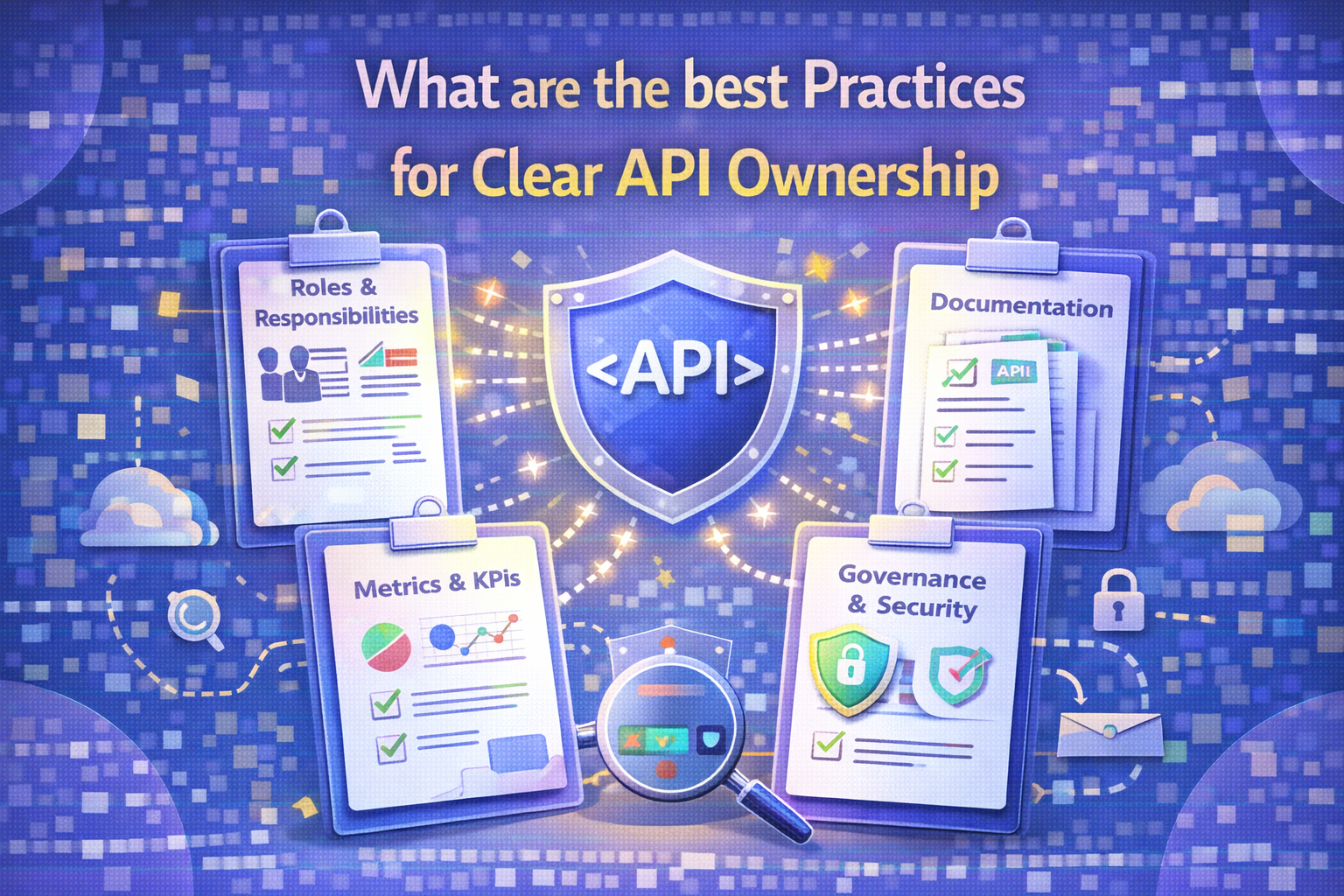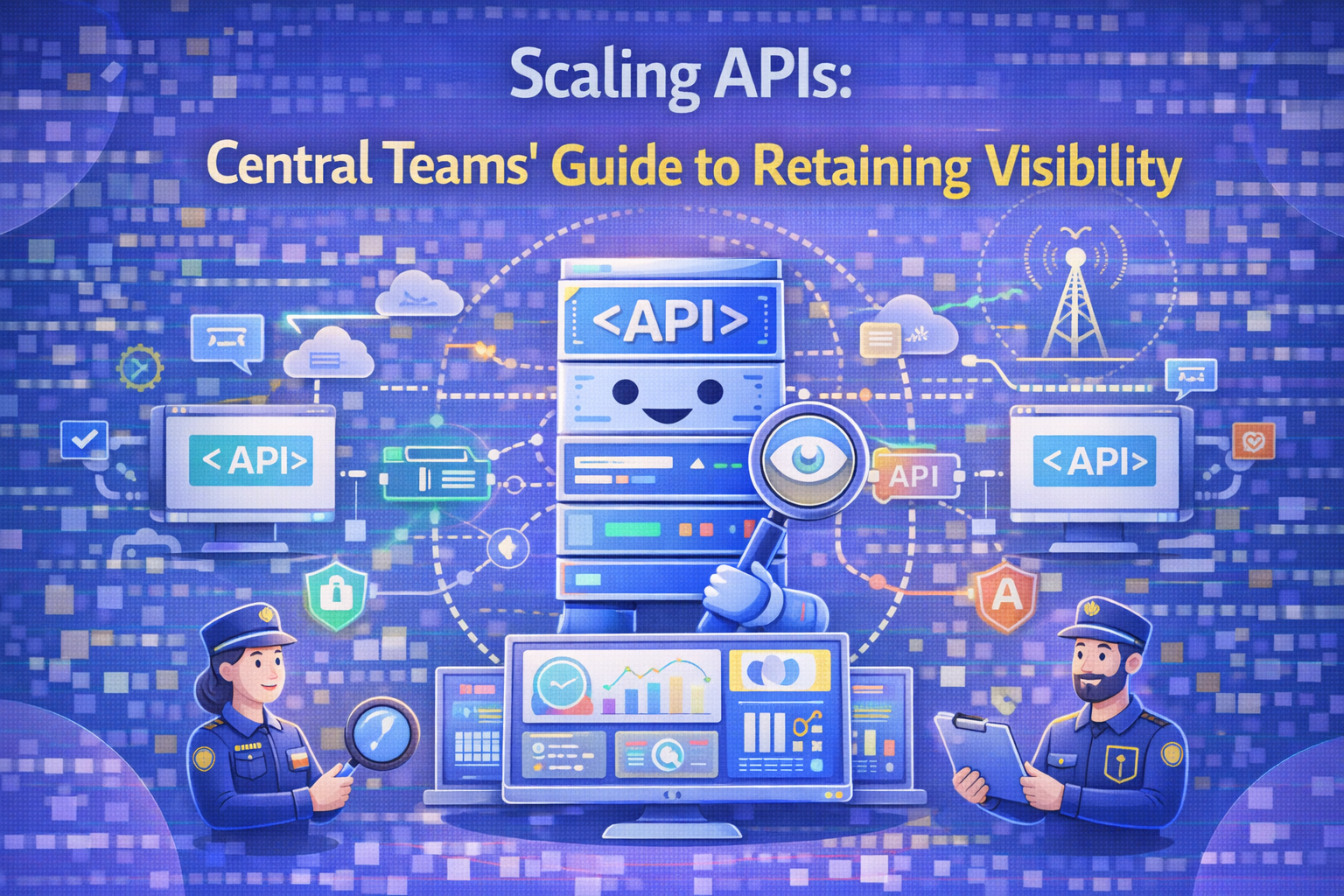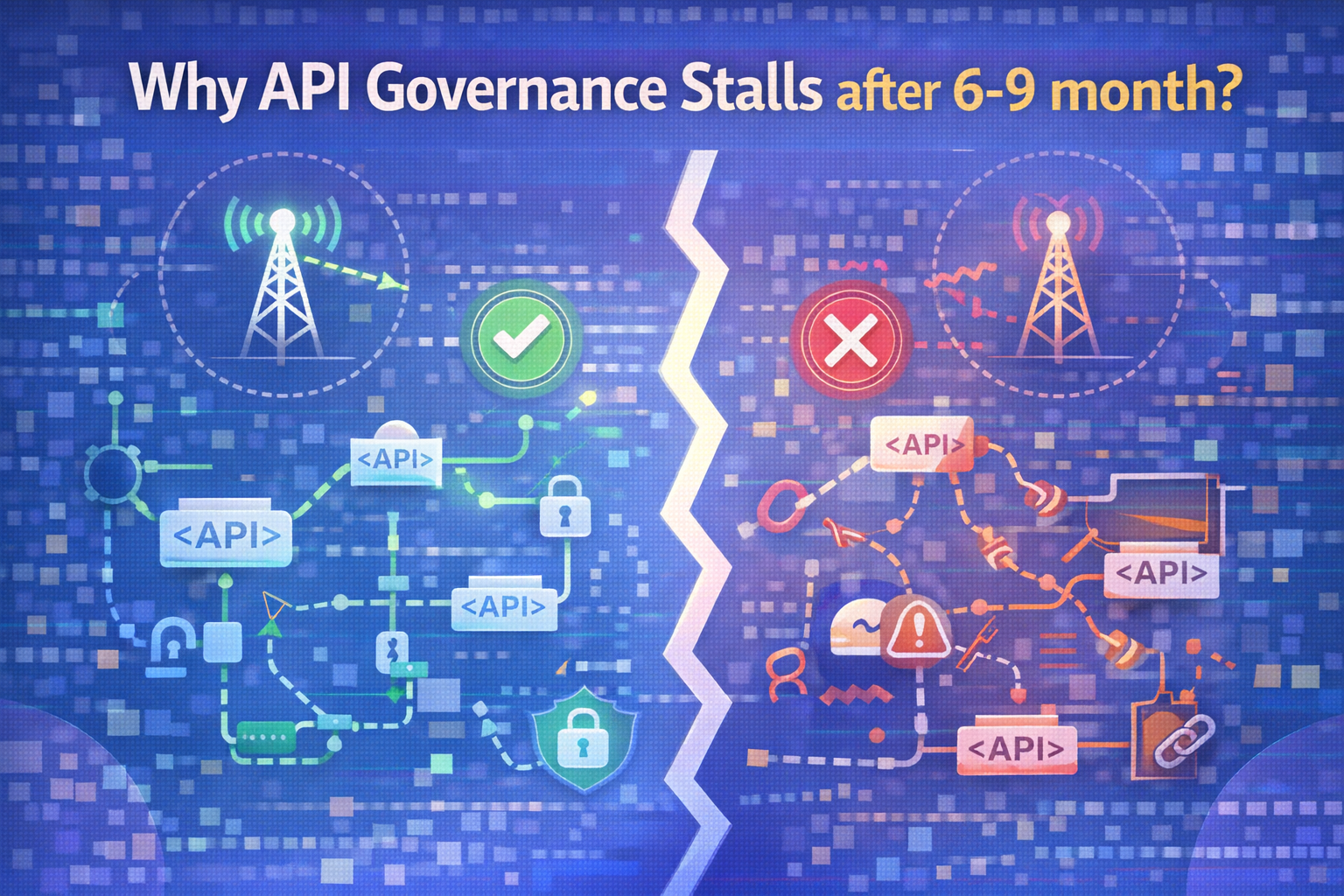
The way we shop has evolved over the years. We started shopping on websites, then mobile apps took over and now? It’s AI browsers and AI Agents stealing the show. We’re in a phase where people won’t go to your site or app first.
They might just use an AI browser like Comet or ask an agent interface like Perplexity, or ChatGPT on what they need.
Picture this: Someone is planning a weekend hike and they need to shop. Instead of asking Google, “best jackets for hiking”, they ask an AI assistant: “Find me a breathable jacket under $40 that works for light rain. Also, show me a quick snack pack to add for free delivery.”
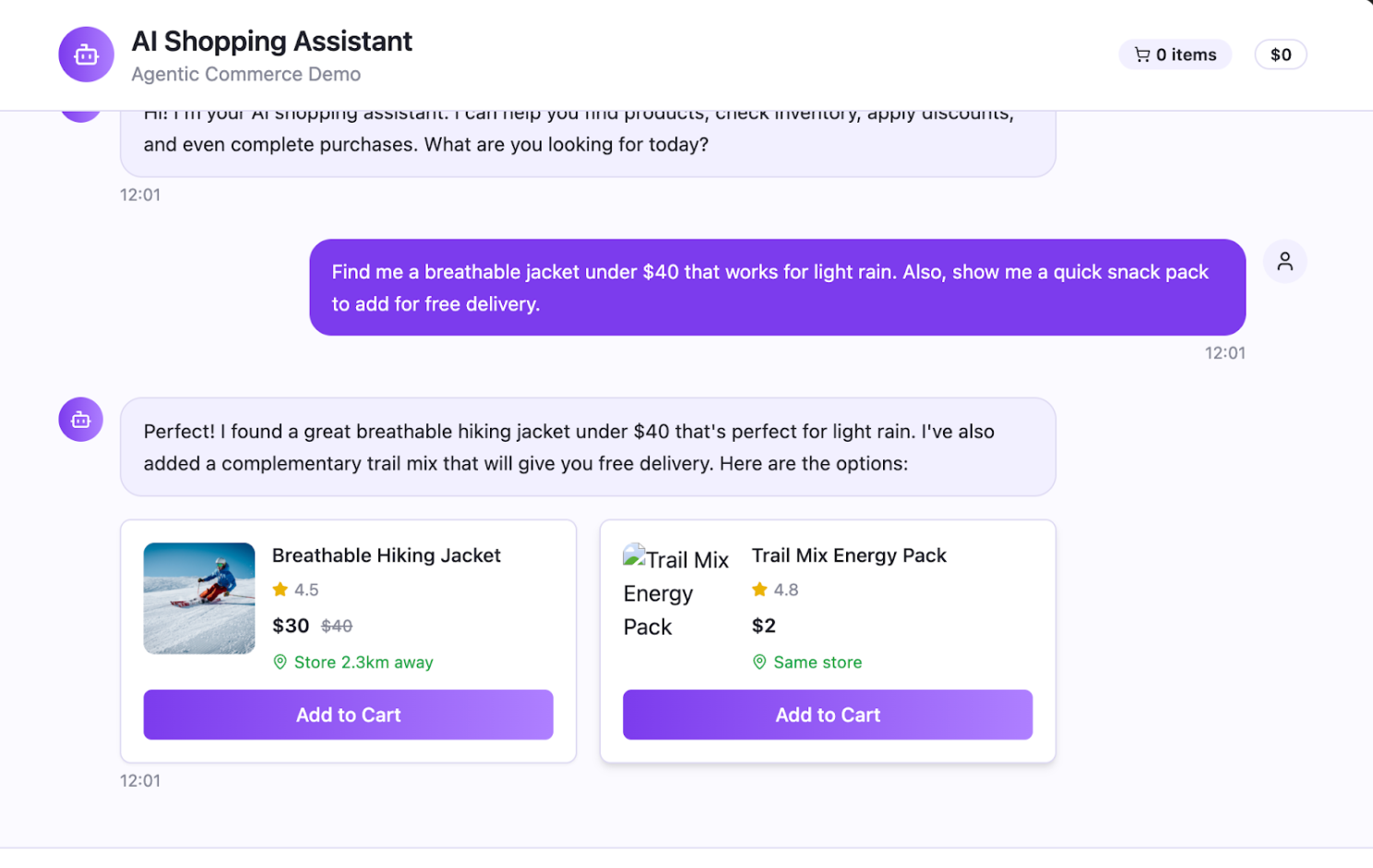
And it figures out the product, fit, stock, location, offers, and gives you the option to add to cart and proceed. And that changes the game for retailers.
Your first touchpoint is no longer your homepage. It’s your product’s ranking in an AI browser or the reply box inside an LLM.
This leads to two big opportunities for retailers
1. Sell via aggregators: Plug your product data into agent interfaces like Perplexity, ChatGPT, and others that customers are already using to shop. These agents will feature your products in their replies. Think of it like SEO for AI prompts.
2. Build your own agent interfaces: Create a branded AI shopping agent that knows your inventory, applies offers, remembers customer preferences, and feels like an extension of your store.
And it doesn't stop here, AI can personalise the entire shopping journey by automatically applying loyalty rewards, surfacing hyper-personalised bundles, suggesting post-purchase add-ons, and even predicting when customers will need a refill.
Let’s explore how AI agents are reshaping retail beyond just search.
What are the use cases of AI Agents in Retail?
For retailers, this opens up a new class of experiences on both the consumer side and the supply chain side of things.
Consumer-facing use cases
1. Smart recommendations: Surface related products using purchase history and similarity APIs. For example Walmart’s AI Assistant named Sparky, which suggests alternatives and bundles in real-time conversations.
2. Natural language search: Enables agents to query product catalog semantically. In India, Myntra has launched an AI assistant named Maya, where shoppers can give simple prompts and get instant search results.
3. Order & delivery support: Expose order, delivery, and returns APIs securely.
4. Loyalty context: Wrap loyalty and coupon APIs with user context.
5. Search: Let users query your product catalog using everyday prompts
Backend & ops use cases
1. Stock replenishment: Agents read from sales + inventory APIs to auto-suggest purchase orders (POs).
2. Procurement tasks: Query goods receipt notes (GRN), vendor, and invoice APIs with filters.
3. Sales analytics: LLMs access business intelligence and transaction APIs with scoped prompts.
4. Warehouse visibility: Expose tracking and quality control APIs to internal agents.
Is your tech stack ready to enable agentic experiences?
AI agents are only as effective as the infrastructure they’re built on. They need context, APIs they can understand, and guardrails. Here’s how to build a modern, agent-ready infrastructure looks like:
1. Build a unified API foundation
Create a central catalogue of discoverable, well-documented, and versioned APIs with consistent standards and governance in place from day one.
2. Enable real-time context & historical access
Let agents tap into live session data and historical records by connecting your context store (Redis, vector DBs) and data lakes or warehouses.
3. Apply MCP wrapper to your APIs
Transform your existing APIs into agent-ready interfaces injecting context, managing retries, and orchestrating multi-step workflows with full access control.
4. Set up the agent execution layer
Define how agents plan, decide, and act using structured prompts, reasoning engines, session state, and LLMs like GPT-4o or Claude.
5. Implement strong security & governance controls
Ensure enterprise-grade trust with role-based access, audit logs, PII masking, and guardrails to prevent abuse or hallucination.
6. Design seamless agent interfaces
Let users interact with agents via Slack, Teams, dashboards, or embedded assistants tailored for internal teams, devs, or end customers.
How DigitalAPI Helps Enterprises Get Agent-Ready
You don’t need to rebuild your systems.
DigitalAPI.ai helps you make your existing APIs and data infrastructure fully agent-ready, fast, secure, and without disrupting what’s already working.
Here’s how:
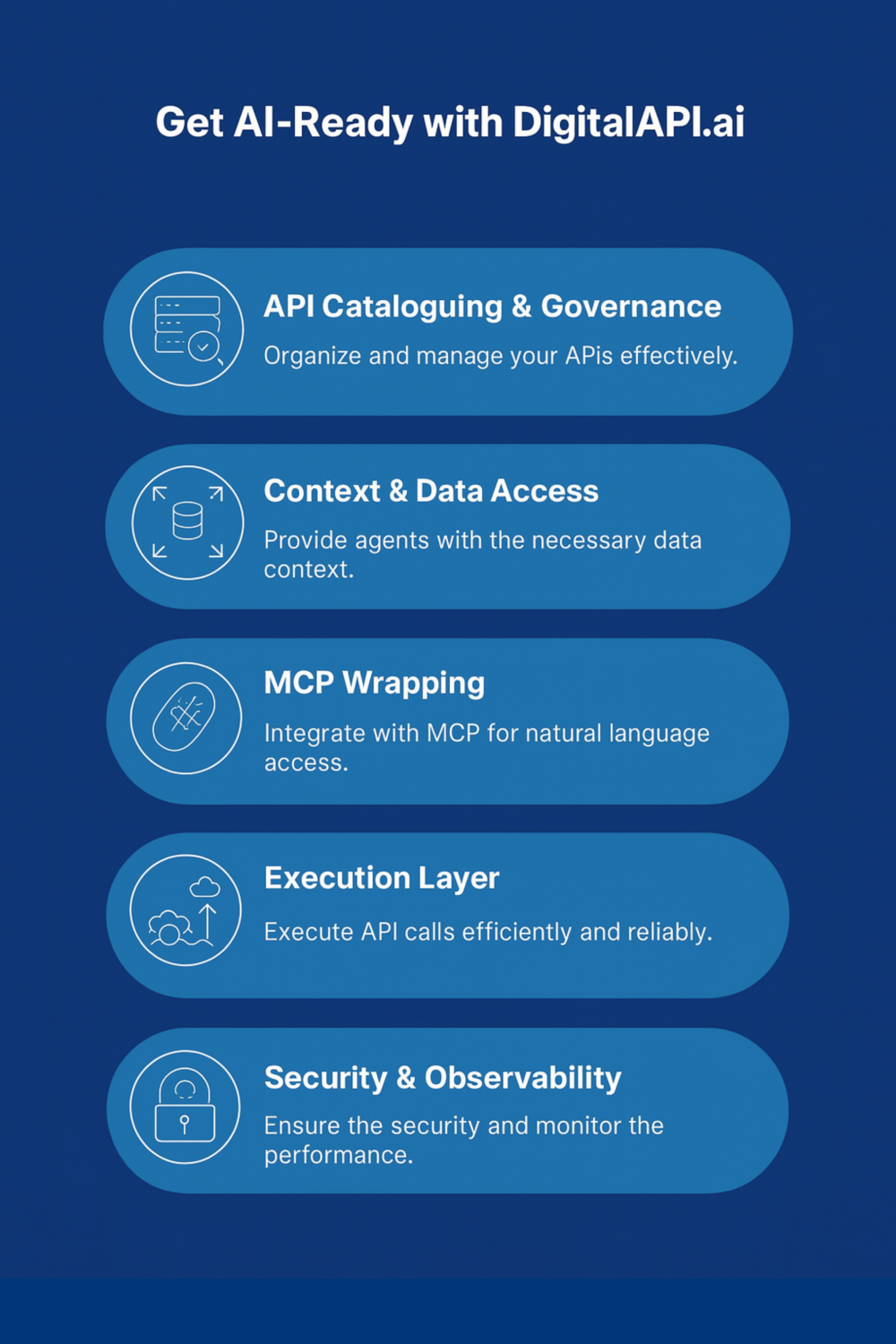
- API cataloguing & governance: We unify your APIs, apply standards, and prep them for agent use.
- Context & data access: We plug agents into real-time context and historical insights.
- MCP wrapping: We convert your APIs into agent-readable format with retries, context, and workflows.
- Execution layer: We power agents with prompt logic, planning, and model integration.
- Security & observability: We enforce access controls, audit logs, and guardrails by design.
The only thing left for you? Design the interface your users will love, we’ll handle the rest.
Let’s make your retail APIs with DigitalAPI.ai. Book a 15-min strategy call here.
You’ve spent years battling your API problem. Give us 60 minutes to show you the solution.
.svg)

%20(1).png)

